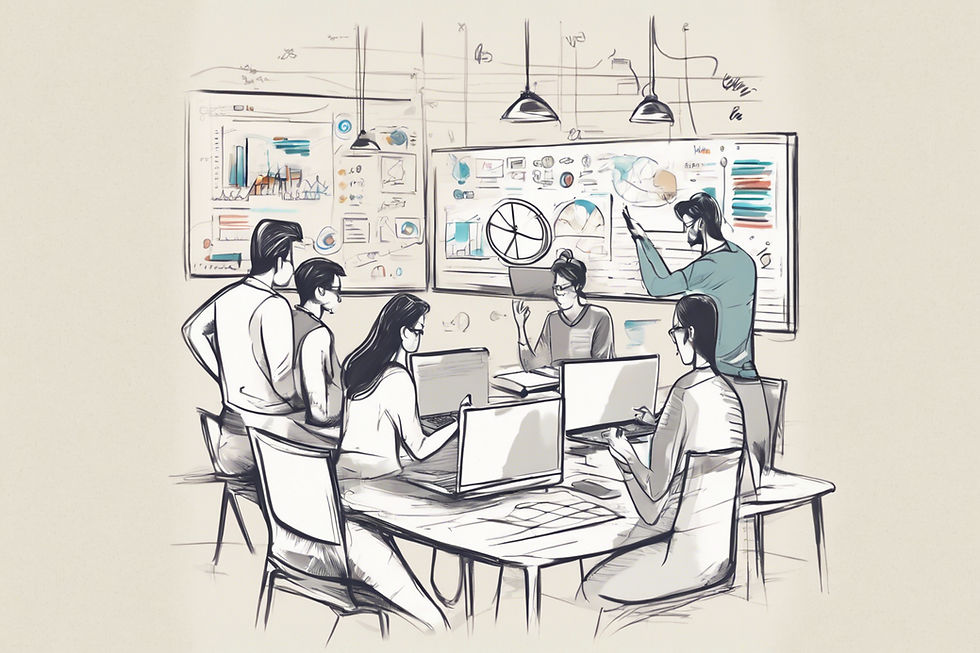Social Media for Social Change: Harnessing Digital Platforms for a Better World
- Just Juniper Media
- Jun 28, 2024
- 5 min read

It didn't take long for social media to transcend its role as a mere communication tool for keeping up with friends, meeting like minded people and what felt like, at first, a place to have a good time online. What it has evolved to today is, in many way, unrecognisable from the early days, but despite the negative aspects, it is also a powerful catalyst for social change. From raising awareness about critical issues to mobilising communities for action, social media platforms have become indispensable for activists, nonprofits, and socially-conscious businesses. Here’s how social media can be harnessed for social change and why it’s more important than ever.
The Power of Social Media in Advocacy
Amplifying Voices
Social media platforms provide a global stage where voices that might otherwise go unheard can reach millions. Activists and advocacy groups can share their messages, stories, and campaigns, bypassing traditional media gatekeepers.
Mobilising Communities
Organising events and mobilising supporters has never been easier. Social media facilitates the rapid dissemination of information, enabling organisers to coordinate protests, fundraising events, and community actions.
Educating and Informing
Education is a crucial component of social change. Social media allows organisations to share educational content, infographics, videos, and articles that inform and engaging the public about various social issues. By presenting facts and stories in engaging formats, social media can increase awareness and understanding, driving more people to take action.
The Dark Side of Social Media: Amplifying Negativity and Falsehoods
Engagement Through Enragement
Unfortunately, social media is also utilised by certain media outlets and nefarious actors to engage and enrage audiences. These entities often exploit algorithms that prioritise content generating high engagement, which frequently includes sensationalist, inflammatory, or misleading information. This can amplify divisive voices and spread misinformation, leading to increased polarisation and social discord.
Clickbait Culture
The pursuit of clicks and views can drive media companies to prioritise provocative content over balanced reporting. Clickbait headlines and emotionally charged posts are designed to grab attention and elicit strong reactions, often at the expense of truth and nuanced discussion. This not only distorts public perception but also undermines constructive dialogue on critical issues.
The Spread of Misinformation
Misinformation and fake news spread rapidly on social media, sometimes faster than factual information. Nefarious actors, including state-sponsored trolls and bots, use social media to disseminate falsehoods and manipulate public opinion. This can have severe consequences, from undermining public health efforts to influencing election outcomes.
Brand Washing
Some brands use social media to wash their appearance and promote themselves as something they are not - jumping on trends for the sake of jumping on trends, rather than actually being committed to any particular cause.
The Need for Concerted Effort to Harness Social Media for Good
Promoting Digital Literacy
To counter the negative impacts of social media, it is essential to promote digital literacy. Educating the public on how to critically evaluate online content, recognise misinformation, and understand the algorithms driving their feeds is crucial. Digital literacy empowers individuals to navigate social media responsibly and make informed decisions.
Encouraging Responsible Use
Social media platforms have a responsibility to ensure their algorithms do not disproportionately amplify harmful content. Encouraging platforms to adopt more transparent and ethical practices can help mitigate the spread of misinformation. Users can also play a role by promoting responsible use, such as fact-checking information before sharing and reporting harmful content.
Leveraging Positive Influences
Despite its drawbacks, social media can still be a force for good. By strategically leveraging the platforms' reach and engagement potential, socially-conscious individuals and organisations can amplify positive messages and drive constructive action. Highlighting success stories, promoting evidence-based information, and fostering inclusive conversations are ways to use social media for positive change.
Strategies for Using Social Media for Social Change
Develop a Clear Mission and Vision
Before diving into social media activism, it’s essential to define your mission and vision clearly. What change are you advocating for? What are your goals? A well-defined mission will guide your social media strategy and ensure that all your efforts are aligned with your core objectives.
Leverage Different Platforms
Each social media platform has its unique strengths and audience. Use Instagram and Facebook for visually-driven content, Twitter for real-time updates and discussions, LinkedIn for professional networking and thought leadership, and TikTok for engaging younger audiences with creative, short-form content. Tailoring your content to each platform can maximise your reach and impact.
Engage with Your Audience
Social media is not just about broadcasting messages; it’s about engaging in conversations. Respond to comments, join discussions, and build relationships with your followers. Engaging with your audience fosters a sense of community and encourages more active participation in your cause.
Utilise Digital Marketing Tools
Digital marketing tools can significantly enhance your social media efforts. Use analytics tools to track your performance and understand what works best.
Partner with Influencers and Organisations
Collaborate with influencers who align with your cause to amplify your message. Influencers can reach a broader audience and lend credibility to your campaign. Additionally, partnering with other organisations can pool resources, share expertise, and create a more substantial impact.
Measure and Adapt
Regularly assess your social media efforts using key performance indicators (KPIs) such as engagement rates, follower growth, website traffic, and conversion rates. Use these insights to refine your strategy, adapt to changing circumstances, and continuously improve your campaigns.
Case Study: Social Media-Driven Social Change
The ALS Ice Bucket Challenge went viral in 2014, raising over $115 million for amyotrophic lateral sclerosis (ALS) research. The campaign involved people dumping buckets of ice water over their heads, posting videos on social media, and challenging others to do the same. It showcased the power of social media to generate widespread participation and substantial funds for a cause.
Conclusion
Social media for social change is more than a trend; it’s a powerful tool that can drive significant impact. By amplifying voices, mobilising communities, and educating the public, social media platforms can facilitate meaningful and lasting social change. However, it is essential to acknowledge and address the darker aspects of social media usage, ensuring a more responsible and ethical approach to digital engagement.
Whether you’re an individual advocate or an organisation, now is the time to embrace social media’s transformative power and contribute to the global movement for social change. It may feel like an uphill battle when it comes to having a more balanced, unifying message break through the noise online, but the more we do it, the more people are encouraged to not take the clickbait, the better chance we have of taking back social media and using it for a force of good.







Comments